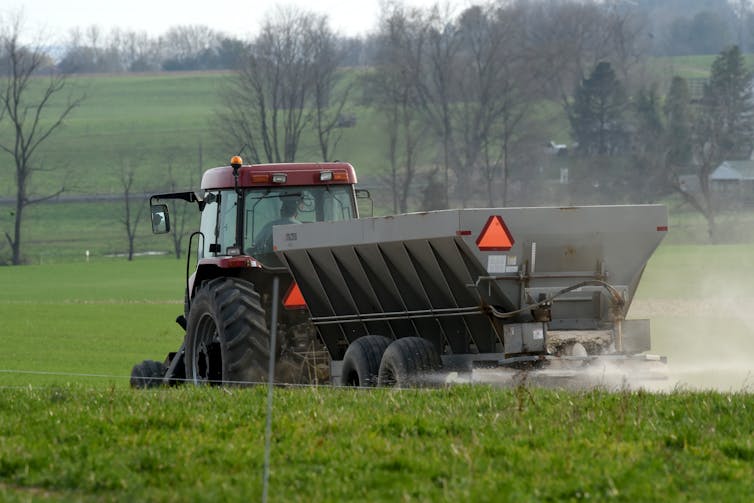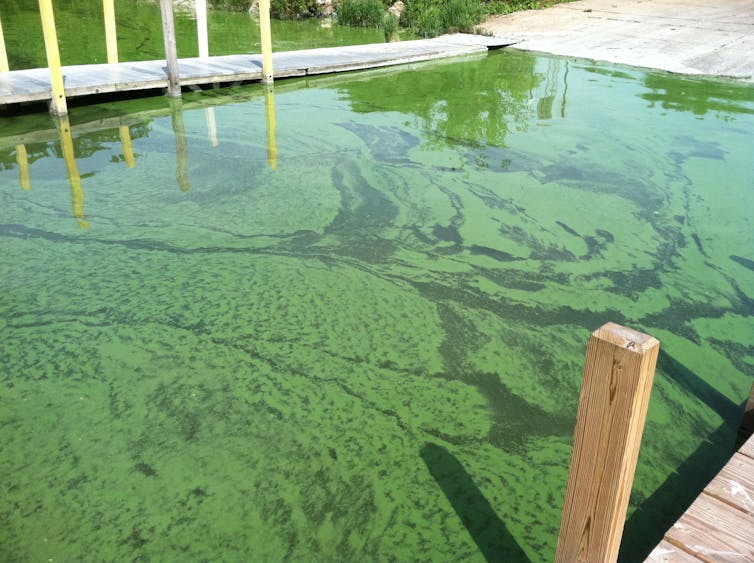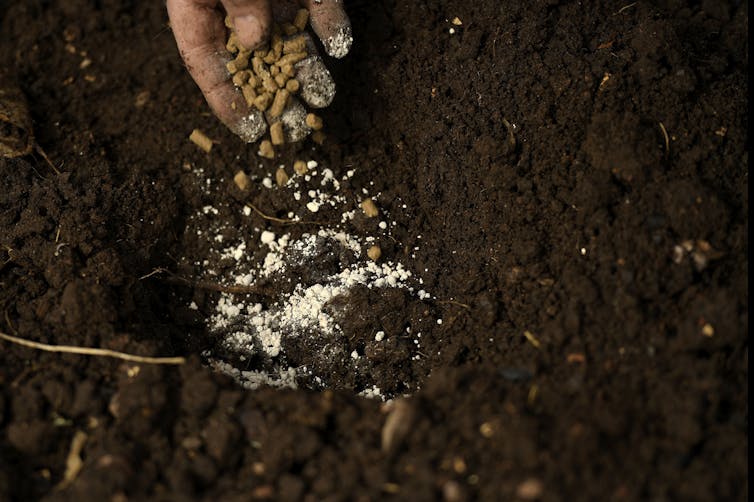Fertilizer prices are soaring – and that’s an opportunity to promote more sustainable ways of growing crops

Kathleen Merrigan, Arizona State University
Farmers are coping with a fertilizer crisis brought on by soaring fossil fuel prices and industry consolidation. The price of synthetic fertilizer has more than doubled since 2021, causing great stress in farm country.
This crunch is particularly tough on those who grow corn, which accounts for half of U.S. nitrogen fertilizer use. The National Corn Growers Association predicts that its members will spend 80% more in 2022 on synthetic fertilizers than they did in 2021. A recent study estimates that on average, this will represent US$128,000 in added costs per farm.
In response, the Biden administration announced a new grant program on March 11, 2022, “to support innovative American-made fertilizer to give U.S. farmers more choices in the marketplace.” The U.S. Department of Agriculture will invest $500 million to try to lower fertilizer costs by increasing production. But since this probably isn’t enough money to construct new fertilizer plants, it’s not clear how the money will be spent.
I direct the Swette Center for Sustainable Food Systems at Arizona State University and have held senior positions at the USDA, including serving as deputy secretary of agriculture from 2009 to 2013. In my view, producing more synthetic fertilizer should not be the only answer to this serious challenge. The U.S. should also provide support for nature-based solutions, including farming practices that help farmers reduce or forgo synthetic fertilizers, and biological products that substitute for harsher chemical inputs.
Too much fertilizer in the wrong places
All plants need nutrients to grow, especially the “big three” macronutrients: nitrogen, phosphorus and potassium. Farmers can fertilize their fields by planting crops that add nitrogen to soil naturally or by applying animal manure and compost to soil.
Since World War II, however, farmers have relied mainly on manufactured synthetic fertilizers that contain various ratios of nitrogen, phosphorus and potassium, along with secondary nutrients and micronutrients. That shift happened because manufacturers produced huge quantities of ammonium nitrate, the main ingredient in explosives, during the war; when the conflict ended, they switched to making nitrogen fertilizer.
Synthetic fertilizers have greatly enhanced crop yields and are rightly credited with helping to feed the world. But they aren’t used evenly around the world. In poor regions like sub-Saharan Africa, too little fertilizer is available. In wealthier areas, abundant synthetic fertilizers have contributed to overapplication and serious environmental harm.
Excess fertilizer washes off of fields during storms and runs into rivers and lakes. There, it fertilizes huge blooms of algae that die and decompose, depleting oxygen in the water and creating “dead zones” that can’t support fish or other aquatic life. This process, eutrophication, is a major problem in the Great Lakes, the Chesapeake Bay, the Gulf of Mexico and many other U.S. water bodies.
Excess nitrogen can also contaminate drinking water and threaten human health. And fertilizers, whether animal-sourced or synthetic, are a significant source of nitrous oxide, a potent greenhouse gas.

What’s causing the crisis
One reason U.S. fertilizer prices have spiked is that farmers are beholden to imports. COVID-19 disrupted supply chains, especially from China, a major fertilizer producer. And the war in Ukraine has cut off access to potash, an important potassium source, from Russia and Belarus.
Another factor is that the fertilizer industry is highly concentrated. There is little competition, so farmers have no choice but to buy fertilizer at the market price. Several U.S. state attorneys general have called on economists to study anti-competitive practices in the fertilizer industry.
The USDA is seeking information on competition and supply chain concerns in fertilizer markets with a public comment deadline of June 15, 2022. But out of 66 specific questions the department posed with this request, only one addresses what I believe is the key issue: “How might USDA better support modes of production that rely less on fertilizer, or support access to markets that may pay a premium for products relying on less fertilizer?”
Rethinking how to grow crops
I see an opportunity for the Biden administration to take a fresh look at biological products as substitutes for synthetic fertilizers. This category includes biofertilizers and bionutrients – natural materials that provide crop nutrition. Examples include microorganisms that extract nitrogen from the air and convert it into forms that plants can use, and fertilizers converted from manure, food and other plant and wood wastes.
Another category, biostimulants, comprises natural materials that enhance uptake of plant nutrients, reduce crop stress and increase crop growth and quality. Examples include algae and other plant extracts, microorganisms and humic acids – complex molecules produced naturally in soil when organic material breaks down.
In the past, critics dismissed natural products like these as “snake oil,” with little scientific evidence to show that they worked. Now, however, most experts believe that while much remains to be learned, current biofertilizers “offer huge potential in terms of new and more sustainable crop management practices.”
Studies have demonstrated many benefits from these products. They include less need for fertilizer, larger crop yields, enhanced soil health and fewer carbon emissions.
Large synthetic fertilizer companies like Mosaic, OCP and Nutrien are distributing, acquiring or investing in these biological technologies. Agribusiness giant Bayer has partnered with Ginkgo Bioworks in a joint venture called Joyn whose mission is creating “sustainable ag biologicals for crop protection and fertility that meet or exceed the performance of their chemical counterparts.”

Offering more choices
Panicked U.S. farmers facing daunting fertilizer prices are looking for options. In public comments on USDA’s fertilizer initiative, the Illinois Corn Growers Association urged the department to investigate why farmers apply fertilizers at levels higher than necessary, while others noted a shortage of agronomists sufficiently trained to guide farmers on how best to sustainably fertilize their crops.
I believe now is an opportune time for USDA to offer incentives for adopting biologicals, as well as practices that organic farmers use to replace synthetic fertilizers, such as crop rotation, composting and raising crops and livestock together. A first step would be to deploy technicians who can advise farmers about sustainable practices and biological products. The department recently announced a new $300 million initiative to help farmers transition to organic production; this is the right idea, but more help is needed.
The agency could also provide one-time payments to farmers in exchange for reducing their use of synthetic fertilizers, which would help to compensate them as they shift their production methods. In the longer term, I believe the USDA should develop new crop insurance tools to protect farmers from the risks of transitioning to more sustainable options. In my view, this kind of broad response would yield more value than a taxpayer-funded, status quo approach to synthetic fertilizers.
Kathleen Merrigan, Executive Director, Swette Center for Sustainable Food Systems, Arizona State University
This article is republished from The Conversation under a Creative Commons license. Read the original article.
News articles
Copyright 2024 - All Rights Reserved